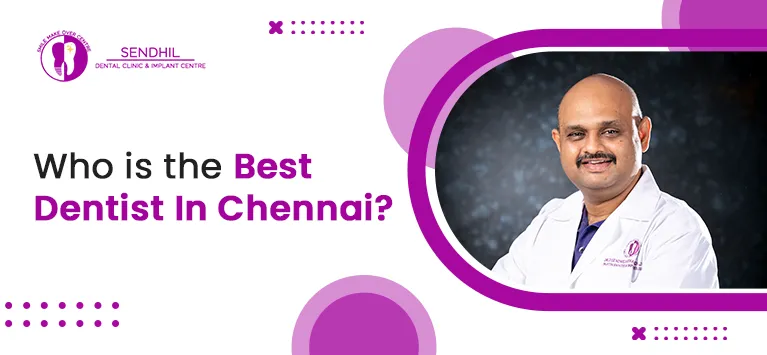
The Role of Laser Technology in Cosmetic Dentistry
Cosmetic dentistry has seen remarkable advancements, owing much of its progress to the integration of laser technology. Dental lasers have not only revolutionized the way esthetic procedures are performed but have also elevated the precision, efficiency, and versatility of these procedures. With the convergence of laser technology and cosmetic dentistry, patients can now achieve both stunning smiles and optimal oral health through innovative techniques and procedures.
Table of Contents
What is laser technology in dentistry?
The dental laser is considered an innovative and revolutionary technology that has multiple uses within the field of dentistry, including the treatment of dental aesthetics such as teeth whitening, dental fillings, and veneers.
With the laser, annoying vibrations and noises, anesthesia, pain, and punctures are avoided, favoring restorations of an aesthetic nature. In addition, it is very useful for interventions in soft tissues.
You can find various types of dental laser used in dentistry, such as the low-power laser, widely used for its anti-inflammatory and analgesic action, and the high-power laser or diode laser.
Advancements in Laser Dentistry for Cosmetic Procedures
In recent years, significant strides have been made in laser technology, enhancing its application in cosmetic dental procedures. These breakthroughs have not only improved the quality of aesthetic outcomes but also ensured patient safety and satisfaction. Let’s delve into some of the notable advancements that have reshaped cosmetic dentistry:
Dual-Wavelength Lasers
Dual-wavelength lasers are a game-changer in the cosmetic dentistry arena. These lasers amalgamate the benefits of two distinct wavelengths within a single device, broadening the scope of cosmetic procedures. Such lasers can effectively remove both soft and hard tissues, rendering them ideal for tasks like gum reshaping, crown lengthening, and precise tooth preparation for veneers.
Laser-Assisted Implant Placement
Implant dentistry has been revitalized with laser technology. Lasers aid in the precise placement of dental implants through minimally invasive procedures. This approach expedites healing and mitigates complications, culminating in efficient and visually appealing implant restorations.
Digital Integration
Laser technology seamlessly interfaces with digital tools like CAD/CAM systems and smile design software. This harmony enables meticulous treatment planning and simulation of cosmetic transformations. Dental practitioners can envision smile makeovers using digital imaging and software and then actualize the envisioned changes with unparalleled accuracy using lasers.
Fractional Laser Technology
Fractional laser technology takes a novel approach by delivering energy in fractions, precisely targeting specific treatment areas. This controlled ablation leaves surrounding tissues intact, extending the application of lasers to comprehensive facial aesthetics. Fractional lasers are employed in procedures like skin rejuvenation, scar reduction, and wrinkle treatment around the mouth, transcending the conventional boundaries of oral cavity treatments.
Cosmetic Uses of Dental Lasers
Dental lasers have ushered in a new era of possibilities in cosmetic treatments. These devices emit focused beams of light energy, targeting specific tissues with unparalleled precision and minimal invasiveness. Their quiet operation and patient-friendly nature make them an optimal choice for cosmetic enhancements. Here are some key cosmetic applications of dental lasers:
Safe and Effective Smile Brightening
Among the array of applications, dental lasers are prominently used for teeth whitening procedures, offering safe and effective results in a single visit. The dentist directs the laser at the teeth, activating the whitening solution and effectively removing surface stains. The outcome is a dazzlingly brighter smile that can last for several months.
Moreover, the precision of lasers, in comparison to other whitening methods, significantly reduces the likelihood of side effects such as tooth or gum sensitivity. This added comfort is a remarkable benefit for patients seeking a radiant smile.
Gum Contouring for Aesthetic Enhancement
Dental lasers also prove invaluable in addressing the issue of “gummy” smiles, where excessive gum tissue covers a substantial portion of the teeth. Through gum contouring, the dentist adeptly employs the laser to eliminate the excess gum tissue, creating a more uniform and visually pleasing gum line. This procedure contributes immensely to the overall enhancement of the smile’s aesthetics.
Interestingly, the application of lasers extends beyond purely cosmetic enhancements. Dentists can employ similar techniques to mitigate the effects of gum disease, showcasing the versatile utility of this technology.
Correction of Oral Restriction Conditions
Laser technology is effective in resolving “tongue-tied” or “lip-tied” conditions resulting from a tight frenulum. By targeting the frenulum with the laser, the constricting tissue is released, resulting in an improved range of motion, speech, and smile aesthetics.
A restrictive frenulum, often referred to as a tongue-tie, can impede various activities, from playing wind instruments to enjoying an ice cream cone. The process of rectifying this condition through lasers is straightforward and can lead to profound improvements in daily life.
Enhancing Proportion and Tooth Length
Dental lasers play a pivotal role in crown lengthening procedures, where a minute amount of gum tissue is removed using the laser. This technique creates the illusion of elongated teeth, resulting in a more natural and proportionate smile.
Individuals who feel their teeth appear disproportionately small can greatly benefit from this procedure. Excessive gum tissue can distort the appearance of teeth, but with crown lengthening, teeth can regain a more balanced and appealing size.
Advantages of using laser treatment in cosmetic dentistry
The advantages of using lasers in cosmetic dentistry are as follows:
- Increased precision in aesthetic treatments.
- Less use of anesthetic injections because it generates an anesthetic effect on the tissue.
- Reduces the patient’s anxiety in front of a needle.
- Decontaminates and coagulates the operating field since the endodontic laser cauterizes as it is used and, in turn, makes the operating field cleaner.
- It is less traumatizing and anti-inflammatory.
- It enables healing, so after a surgical process, it is not necessary to put sutures in most cases.
- Postoperative pain is less.
- It better preserves the state of the tooth when treating it.
- Turbines and other instrument noise are avoided.
- Provides greater comfort, making interventions shorter.
Conclusion
Laser technology has brought in a new era of aesthetic dental operations. Lasers have raised the standard for cosmetic quality in areas ranging from gum contouring to teeth whitening and beyond. Lasers have carved a new terrain in aesthetic dentistry by combining accuracy, efficiency, and patient comfort.
Dental practitioners may achieve incredible aesthetic accomplishments while maintaining maximum patient satisfaction by utilizing the potential of laser technology. If you’re thinking about cosmetic dental treatments, you should look into laser dentistry and work with qualified practitioners who can use this cutting-edge technology to achieve your perfect smile.





